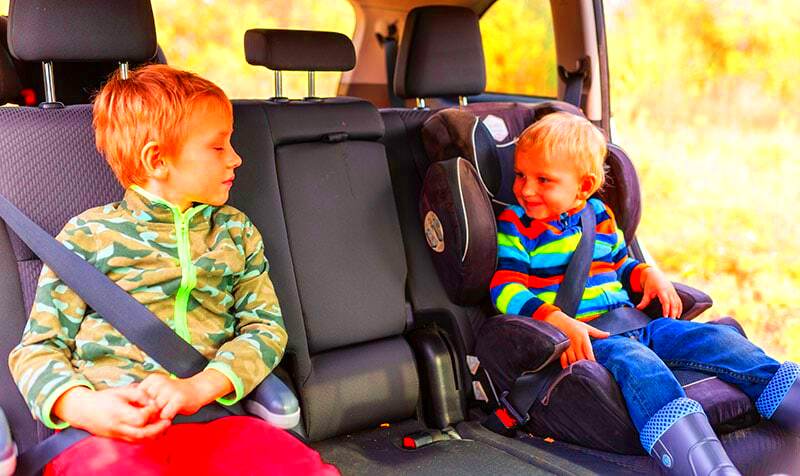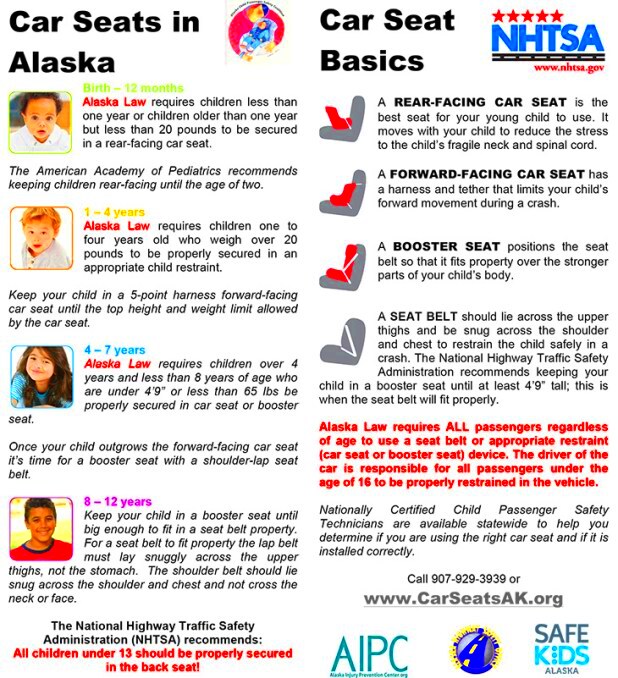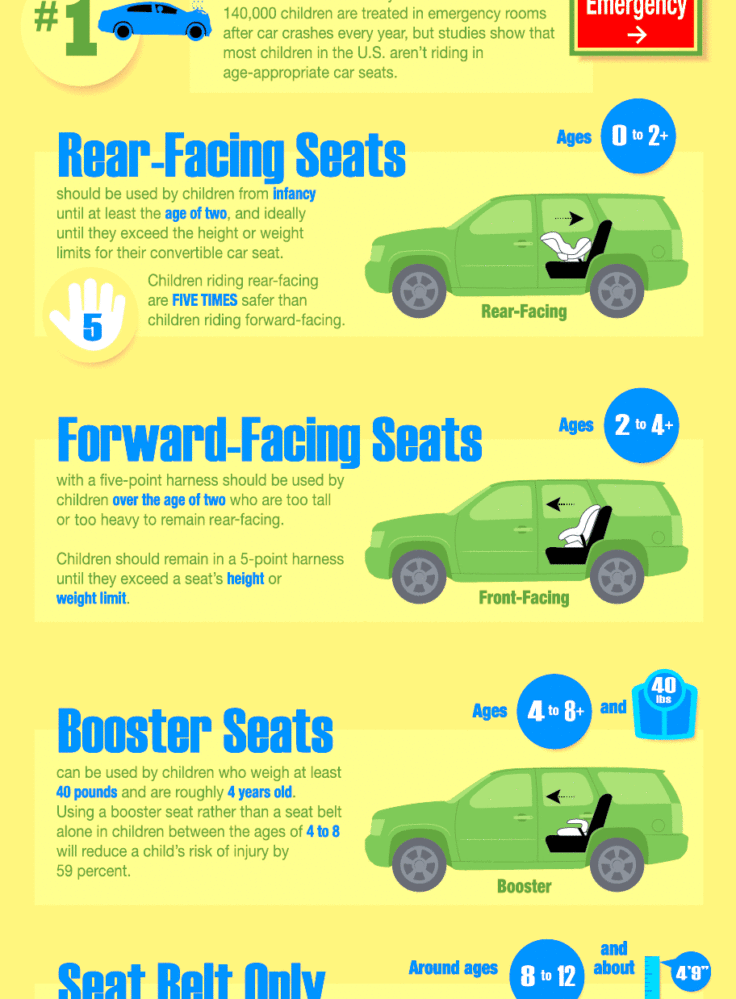Alaska Booster Seat Laws and Requirements for Parents
In Alaska, booster seat laws are in place to ensure the safety of young passengers in vehicles. These laws help protect children who have outgrown their forward-facing car seats but are still not ready to use regular seat belts. By understanding these laws, parents can make informed decisions about the safety of their children while traveling.
Importance of Using Booster Seats

Using a booster seat is crucial for the safety of children in cars. Here are a few reasons why:
- Proper Fit: Booster seats elevate a child so that the seat belt fits correctly across their body.
- Reduces Injury Risk: Studies show that using a booster seat can significantly reduce the risk of injury in the event of an accident.
- Legal Requirement: Following Alaska’s booster seat laws helps parents avoid fines and ensures they are complying with state regulations.
In summary, booster seats play a vital role in keeping children safe on the road, and understanding their importance helps parents prioritize safety during travel.
Age and Weight Requirements for Booster Seats

In Alaska, there are specific age and weight requirements that parents must follow when using booster seats:
| Age | Weight | Booster Seat Requirement |
|---|---|---|
| 4 years and older | 40 lbs or more | Must use a booster seat until they reach 4’9″ tall |
| Under 4 years | Less than 40 lbs | Must use a forward-facing car seat |
It’s essential to regularly check your child’s height and weight to ensure they meet these requirements. Remember, while the law mandates certain limits, it’s always safer to keep children in booster seats as long as possible for optimal protection.
Types of Booster Seats Allowed in Alaska

In Alaska, there are different types of booster seats that parents can choose from, each designed to keep children safe while riding in vehicles. Understanding these types can help parents make the best decision for their child’s safety. Generally, there are two main types of booster seats:
- High-back Booster Seats: These seats offer head and neck support, making them ideal for vehicles that don’t have headrests. They help position the seat belt correctly across the child’s body.
- Backless Booster Seats: These are more portable and usually less expensive. They are suitable for older children who can sit up straight without needing additional support. However, they should only be used in vehicles with headrests.
Both types of booster seats are effective in improving the fit of the vehicle’s seat belt. Remember to always check that the booster seat meets federal safety standards and is appropriate for your child’s age and weight.
Proper Installation of Booster Seats
Installing a booster seat correctly is crucial for ensuring your child’s safety. Here are some steps to follow for proper installation:
- Read the Manual: Always start by reading the booster seat’s instruction manual and your vehicle’s owner manual. They provide important information specific to your seat and car.
- Positioning: Place the booster seat in the back seat of the vehicle. The center position is generally the safest spot, but if that’s not possible, choose the side that allows for the best fit.
- Seat Belt Fit: Ensure the lap belt sits low across the child’s hips, not the stomach, and the shoulder belt crosses the chest and shoulder.
- Secure the Seat: If your booster seat has a latch system, make sure it’s properly secured. For backless seats, the seat belt must be tight and properly positioned.
Regularly check the installation to make sure it remains secure, especially after moving the seat or after any heavy use.
Common Mistakes to Avoid with Booster Seats
While using booster seats, parents can sometimes make mistakes that may compromise their child’s safety. Here are some common pitfalls to avoid:
- Using a Booster Seat Too Early: Children should only transition to a booster seat once they have outgrown their forward-facing car seat.
- Incorrect Seat Belt Position: Ensure the seat belt fits properly over the child’s body. A poorly positioned belt can lead to serious injuries in an accident.
- Skipping the Booster Seat: Some parents assume their child is ready for a seat belt too soon. Make sure your child meets the height and weight requirements before switching.
- Neglecting the Back Seat: Always place booster seats in the back seat. Front seats are more dangerous for young children.
By avoiding these mistakes, parents can significantly enhance their child’s safety while traveling in a vehicle. It’s all about making sure that every ride is as safe as possible!
Enforcement of Booster Seat Laws
Enforcement of booster seat laws in Alaska is essential to ensure the safety of children traveling in vehicles. Law enforcement agencies are responsible for monitoring compliance with these laws and taking action when necessary. In Alaska, if a child is not properly secured in a booster seat, parents can face fines and penalties. Here’s how enforcement typically works:
- Traffic Stops: Officers may issue citations for not using proper child safety seats during traffic stops. This includes not using booster seats when required.
- Education: Many law enforcement agencies focus on educating parents about the importance of booster seat laws and how to properly use them.
- Awareness Campaigns: Periodic campaigns remind parents of the laws and the significance of using booster seats correctly.
It’s important for parents to understand that these laws are in place to protect their children. By following booster seat laws, parents not only avoid fines but also ensure their children are as safe as possible while riding in vehicles.
Resources for Parents on Booster Seat Safety
For parents seeking guidance on booster seat safety, several resources are available to provide valuable information and support. Here are some helpful options:
- Local Health Departments: Many health departments offer resources on child passenger safety, including how to choose and install booster seats correctly.
- National Highway Traffic Safety Administration (NHTSA): This organization provides comprehensive guidelines and information about booster seat laws, safety tips, and installation guidance.
- Safe Kids Worldwide: This nonprofit organization focuses on preventing childhood injuries and offers resources specifically related to car seat and booster seat safety.
- Local Car Seat Checks: Many communities host events where parents can have their booster seats inspected by certified technicians. These events are excellent for receiving personalized advice.
By utilizing these resources, parents can ensure they are making informed decisions regarding their children’s safety while traveling.
FAQ
Here are some frequently asked questions regarding booster seat laws and safety:
- What is the law regarding booster seats in Alaska?
In Alaska, children must use a booster seat until they are at least 4’9″ tall or 8 years old, whichever comes first. - Can I use a backless booster seat for my child?
Yes, as long as your child meets the weight and height requirements and the vehicle has a headrest. - How do I know if my child is ready to switch to a seat belt?
Your child is ready when they can sit with their back against the vehicle seat, knees bent comfortably over the edge, and the seat belt fits properly. - Where should I place the booster seat in the car?
The booster seat should be placed in the back seat of the vehicle, ideally in the center position if it can be secured properly.
These FAQs help clarify common concerns and promote safe practices among parents regarding booster seat use.
Conclusion
In conclusion, understanding and adhering to booster seat laws in Alaska is crucial for ensuring the safety of young passengers. Parents must be aware of the types of booster seats available, their correct installation, and the importance of using them until children meet the appropriate height and weight requirements. By avoiding common mistakes and utilizing available resources, parents can effectively protect their children while traveling. Ultimately, compliance with these laws not only keeps children safe but also fosters a culture of safety and responsibility on the road. Prioritizing booster seat safety means prioritizing the well-being of our future generations.


